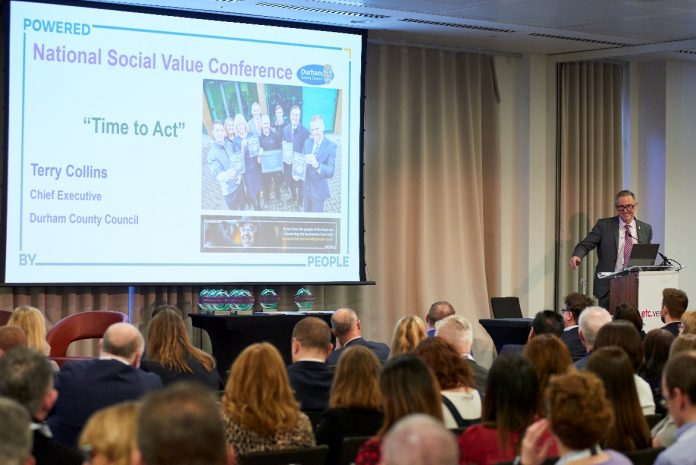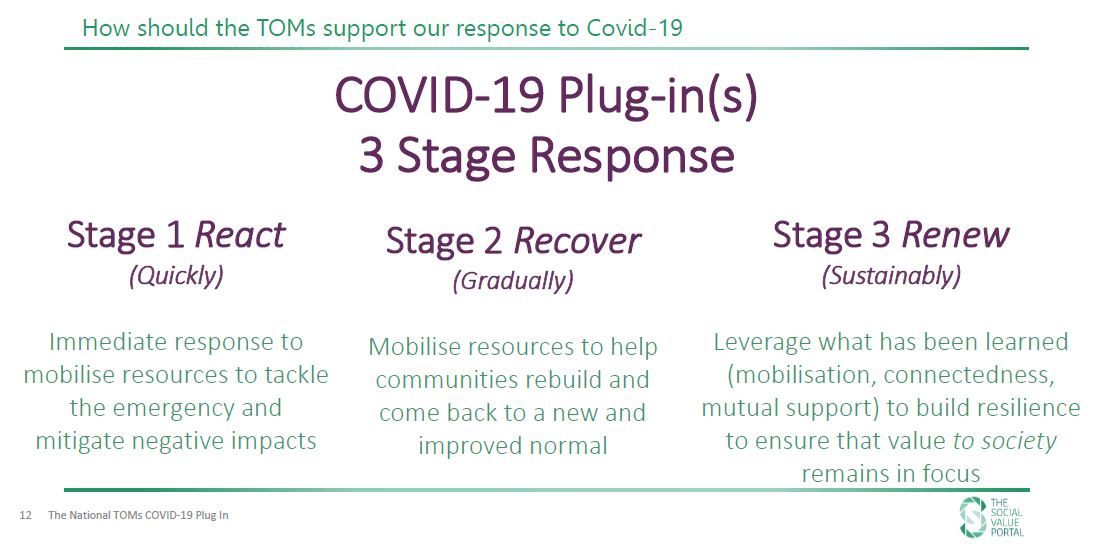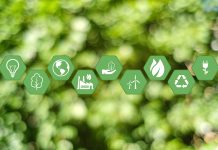Social Value Portal discusses how rethinking social value priorities to reflect the current and future challenges of COVID-19 is crucial for sustainable social value
In the previous article, we talked about the future of social value after Brexit. 2019 was a pivotal year for social value movement. It became part of the mainstream in local authority procurement and was rapidly becoming part of the narrative in planning and regeneration, while the adoption of the UN Global Goals added impetus to the adoption of social value principles by large corporates.
This momentum culminated in the third annual National Social Value conference at the end of January 2020, which continued the trend of doubling the number of delegates each year since the first conference at the end of 2017.
The National TOMs (“Themes, Outcomes and Measures”)
The National TOMs (“Themes, Outcomes and Measures”) have never been set in stone. They were always conceived as an evolving framework, developing as organisations become more mature in their delivery of social value and remaining current and relevant to issues both now and in the future.
With the TOMs now well established, the Social Value Portal and the National Taskforce (the independent supervisory body that oversees the National TOMs) decided last year to push on and expand in the scope of the TOMs.
Within the TOMs framework, each social value measure is developed independently. This allows complete flexibility, both in applying and expanding the framework. Based on an open consultation exercise during the summer of 2019, the National TOMs 2020 was developed. This new version significantly increased the range of available social value measures, mainly in two areas:
- Opportunities for disadvantaged groups (e.g. care leavers, armed service veterans, etc.)
- Addressing the Climate Emergency (single-use plastics, circular economy, sustainability in the supply chain, etc.)
The 2020 TOMs were launched at the conference in January this year. The plan was to continue development through stakeholder engagement on Good Work (job quality, security, training, and equal opportunities) and the Climate Emergency throughout 2020.
Since then, of course, events have taken an unexpected turn.
With COVID-19, the country moved into lockdown and emergency response with us having to rethink our approach to social value. While the immediate emergency will pass, all the indications are that the virus is likely to be with us for some time to come, and the socio-economic effects will be with us for perhaps even longer.
So where does this leave social value as a concept?
The TOMs measurement framework is full of measures that require face to face contact: mentoring, volunteering, educational initiatives, etc. How can these be delivered in a time of social isolation? How can suppliers even begin to think about making social value commitments when they are worried about short term cashflow? What really matters in terms of social value now and what, ultimately, is our purpose in pursuing it?
There are many responses to these questions. While resources have to be directed to where they are needed just now, it is equally important to think about the future – both the “recovery” phase as we start to emerge from the crisis, and the stage beyond that – the “new normal.”
This time has already taught us much about ourselves, our communities, and our society. We are seeing all sorts of examples of innovation in social value at the moment. The construction framework provider Scape Procure, for instance, is collaborating with its contractors to produce an online training module for school students to replace the face to face skills and training support that would have been delivered before COVID-19.
Barely two months after the 2020 TOMs were published, the Social Value Portal published a COVID-19 variant – a first response which sought both to rethink social value priorities in a COVID world and reflect the current challenges facing both procuring and commissioning authorities and their supply chain. This variant of the TOMs is just a first step – we see three clear response stages:
- React – the immediate response.
- Recover – how we come out of “lockdown” (which presents its own challenges, as recovery is unlikely to be rapid or linear.)
- Renew – how we build a resilient society for the future that can flex and bounce back more quickly.
These challenges come within an envelope of accelerating environmental degradation. Sadly, postponement of COP 26 does not also mean the postponement of the climate emergency. Transport, for instance, was already the biggest unsolved problem for a society trying to become net-zero carbon and the fear is that one pathway out of the lockdown is more carbon-intensive than before – more tourism, more cars, more flights, less public transport and so on. Which is why some of the more environmentally astute are actively promoting alternative visions of the future, through support for walking and cycling, for example; although how this particular strategy can be made to work outside the densest urban environments is as yet unclear.
It is too early to learn many of the lessons, but without a doubt, the inequalities in this country have been starkly exposed by this crisis. In many cases the corporate response has been tremendous – for instance, there is generous support for food banks across the country. This invaluable assistance should not, however, take away from facing up to the economic precariousness of many families that is forcing them to the food banks in the first place. If nothing else, it is abundantly clear that we need to look at the resilience, not just of our health service, but of our social and economic structures as well. Once we have tackled the immediate crisis, we need to focus on social value that helps to build future resilience – to focus on sustainable social value.
Please note: This is a commercial profile












